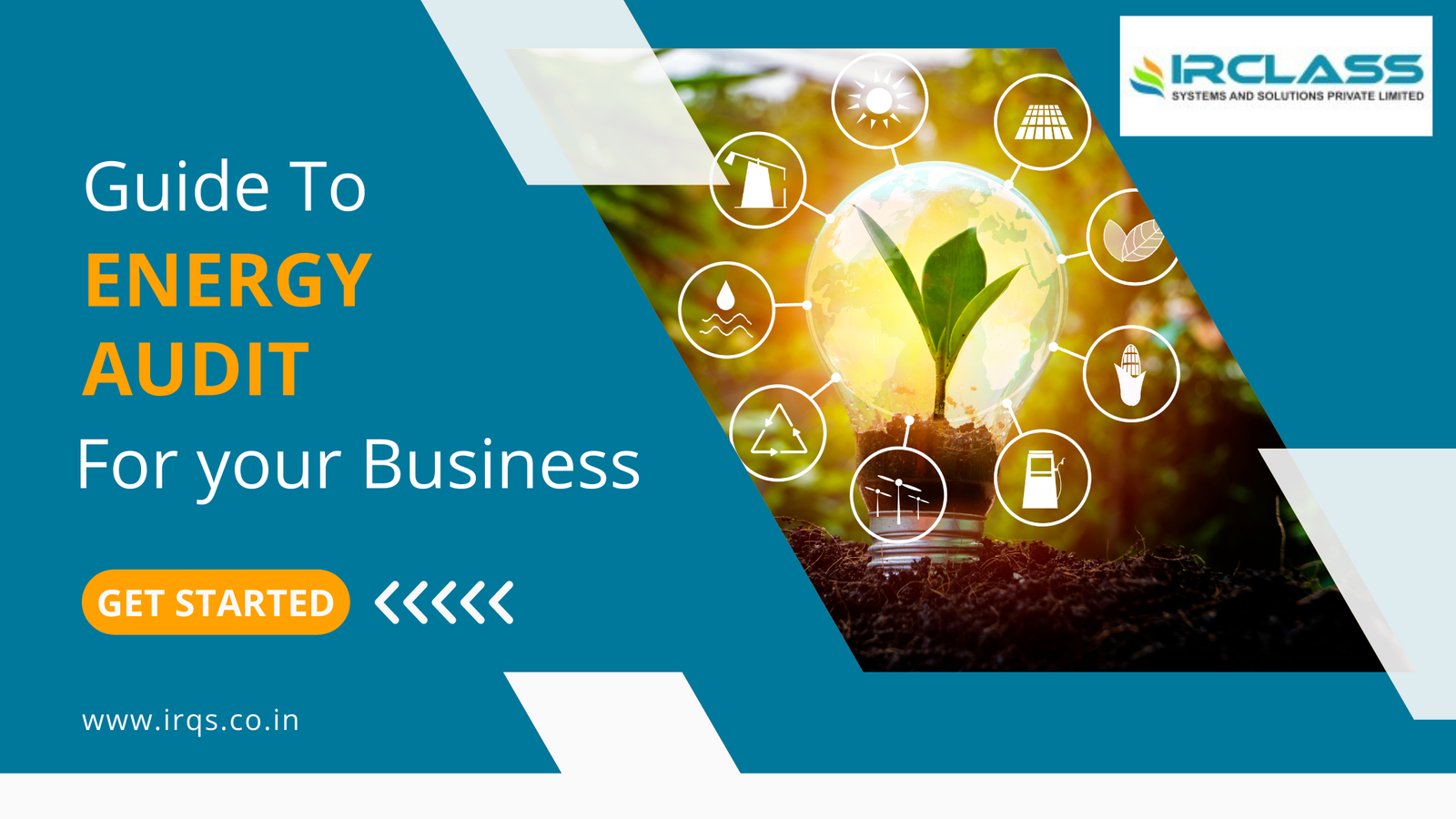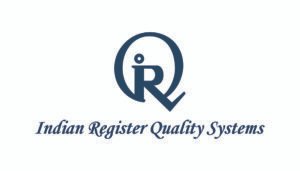Category: Energy Audit

ISO 50001 Internal Auditor Training: Master Energy Compliance & Savings
ISO 50001 Internal Auditor Training ISO 50001 Internal Auditor Training equips professionals to assess and optimize Energy Management Systems (EnMS) aligned with global standards. IRQS’s program focuses on audit methodologies, energy performance evaluation, and compliance with ISO 50001:2018. With a 92% certification success rate and 40% faster audit cycles, this training drives measurable ROI through energy cost reductions and regulatory adherence. Did you know? Organizations with ISO 50001-certified auditors slash energy costs by 30% and cut carbon footprints by 24% within 12 months. In an era where energy prices surged 45% in 2023, mastering ISO 50001 isn’t optional—it’s survival. Key Takeaways Why ISO 50001 Internal Auditor Training Matters The Global Energy Crisis & Regulatory Shifts Energy costs rose 45% globally in 2023, pushing organizations to adopt ISO 50001 for cost control and compliance. The standard’s PDCA (Plan-Do-Check-Act) framework aligns with the EU’s Energy Efficiency Directive and India’s PAT Scheme, making it indispensable for industries like manufacturing, IT, and construction. Role of Internal Auditors Auditors act as energy detectives, ensuring: Core Components of ISO 50001 Training IRQS’s Curriculum Breakdown Module Key Focus Tools Used Standard Mastery Clauses 4–10 of ISO 50001:2018 IRQS’s Compliance Checklist Audit Planning Risk-based approaches per ISO 19011:2018 Energy Performance Indicators (EPIs) Practical Simulations Live audits of HVAC, lighting systems AI-Driven Energy Analytics Software Reporting Nonconformity grading & corrective actions PDCA Cycle Templates Unique Insight: IRQS integrates sector-specific scenarios (e.g., data center cooling audits for IT, process heating for manufacturing) to bridge theory and practice. Training Formats Compared Format Duration Pass Rate Best For In-Person 3 Days 95% Hands-on learners, complex industries Virtual 16 Hours 90% Global teams, cost-conscious firms Self-Paced 30 Days 85% Busy professionals, refresher courses Stat: Firms using IRQS’s hybrid model (virtual + in-person) reduce audit prep time by 60%. Strategic Benefits of Certification Cost & Compliance Wins Future-Ready Skills IRQS’s 5-Step Audit Framework Prediction: By 2026, 60% of audits will use digital twins for virtual energy system modeling. Emerging Trends & Predictions Conclusion ISO 50001 Internal Auditor Training is a strategic asset in a volatile energy landscape. IRQS’s blend of expert-led training, tech integration (AI, IoT), and sector-specific modules ensures auditors drive compliance, innovation, and profitability. Call to Action: Ready to lead the energy transition? Explore IRQS’s ISO 50001 Training Programs today. FAQs Q1: What prerequisites are needed?A: Basic knowledge of energy systems or ISO standards. IRQS offers pre-course modules for beginners. Q2: How long is certification valid?A: 3 years, with annual refreshers recommended via IRQS’s Training Calendar. Q3: Can training be customized for SMEs?A: Yes! IRQS provides scalable solutions for startups to enterprises. References

Comprehensive Guide to Conducting an Energy Audit for Your Business
Comprehensive Guide to Conducting an Energy Audit for Your Business Energy audits are indispensable in the discovery of imbalances and optimization of costs. They include appraisal of energy consumption, identification of loss, and recommendations for enhancement. Companies themselves will also be able to reap benefits from these audits. Organizations could save more energy by making changes following the audit results. Doing business audits keeps your business on the right side of energy conservation and manageable expenditure. Benefits of Energy Audits An energy audit is very beneficial in that it assists in cutting expenses on utilities and lowers the impact on the natural world. Energy efficiency enhancements reflect systems optimization of organizational activity. It has been proven that audits can reveal concealed areas of inefficiency. Hence, it plays a part in making your company environmentally friendly and sustainable. Preparing for an Energy Audit Preparation is essential for an effective energy audit. To begin with, one must compile every piece of information, from utility bills to lists of equipment. Understand the layout of your facility and its usage of energy. Determine activities and processes that consume more power. This information will assist the auditors in properly evaluating energy requirements and waste on your undertakings. Choosing the Right Auditor Getting the right auditor is crucial. Search for certified employees who have worked for a couple of years in this industry. An efficient auditor will consider details and implementable solutions. Ensure you confirm their credibility and other clients’ experiences. Hiring a professional increases the chance of getting an accurate report. Initial Walkthrough The initial communication is the first step in the audit, known as the walkthrough. In this phase, the auditor physically scans your facility. It is necessary to mention the equipment, lighting, and HVAC systems available in the facility. Lack of access to files allows the systematic observations and presence of apparent problems during the walkthrough. Although it appears as a general step, it paves the way for a detailed strategy analysis. Detailed Data Collection Data collection is one of the vital processes in the auditing framework. Auditors collect information that relates to energy use and performance of systems. They analyze the consumption of energy by using specific instruments for this purpose. This data is the starting point for analyzing the system and defining areas of problems and possible optimizations. Analyzing Energy Consumption Energy audit focuses on collected data performance analysis. While examining energy use, auditors also appear to correct trends and variations. They compare it with other industries related to your field of activity. The analysis used assists in defining the places where energy is drained. Hence, comprehending these patterns is crucial for identifying the correct energy-saving measures. Identifying Inefficiencies When data is processed, auditors now look for areas of improvement. These could be outdated equipment, poorly insulated structures, or inadequate lighting sources. They identify places in which energy could be saved. These inefficiencies help in devising a strategy to deal with them. Recommending Improvements Of the listed inefficiencies, auditors make suggestions. Some of these suggestions may refer to the update of machinery, improvement of the insulation, or change of lighting. They are made so that they suit the client’s specific requirements. These changes can go a long way toward cutting down on energy consumption. Recommendations should be implementable, realistic, and if possible inexpensive. Prioritizing Actions It is okay not to address all recommendations at the same time. Rank the activities according to imposing effects and implement them accordingly. Introduce other recommendations in a step-by-step manner depending on capacity. This phased approach, when adopted, ensures that the implementation is done systematically and to the maximum benefit of the verification organization. Implementing Changes Execution is the next step for all the strategies that may have been developed or plans that may have been outlined. Implement the suggested changes in phases. It is vital to supervise the process as much as possible for it to be without hitches. The parties in the project should address any emergent problem before it distorts the other aspects of the project. This reception results from successful implementation, which enhances energy efficiency and lowers costs. Evaluation and Monitoring It is also imperative to periodically testify to the solution. Reporting energy usage and projection is another method since the effectiveness of the changes can be assessed by measuring usage. Determine whether the changes that have been made are yielding the intended outcomes. Daily supervision ensures energy saving and finding ways of increasing it. Employee Involvement People’s involvement is vital to maintaining energy efficiency in organizations. Inform your team regarding the significance of energy conservation measures. Try to make them change for the better in their daily workplace conduct. One of the ways is the employees’ commitment, which supports the sustainability of the changes realized from the audit. Ensure that the organization’s rules and regulations are followed during the implementation of the energy efficiency program. Benefits of Consistent Improvement Energy efficiency is a continuous process that needs to be embarked on or pursued by human society. Audits must be performed regularly, and changes implemented should be sustainable, thus providing long-term gains. Learn the current knowledge and skills used in the present job market. Timely review and update the energy-saving strategies being implemented. It is because continuous improvement assists your business in avoiding achieving and maintaining its competitive advantage and sustainability. Increase the success of an energy auditing The following guidelines will help you in having a successful energy audit: – Gather Comprehensive Data: Gather accurate data concerning your facility’s energy consumption and the energy-using systems. This data is vital as it will enhance the appropriate execution of analysis. – Engage Qualified Auditors: Hire professional and experienced auditors so that the outcomes will be accurate and you get good recommendations. – Prioritize High-Impact Actions: Prioritize the measures that yield maximal energy-saving results. – Involve Employees: Promote power conservation to your staff to retain and improve their performance. – Monitor and Evaluate: Monitor the energy consumption and examine

Energy Audit and Its Growing Importance – All That You Need To Know
In the corporate world, the increasing essentiality of energy management and efficiency makes the audit process inevitable. An audit that reviews and brings an overview of the current energy management scenario in the office or building helps the organization in more than one way. It also helps the organization promote environmental awareness with calculated steps of sustainable energy management. An energy audit is a systematic process to conduct a survey and analyze the energy flow in the concerned site. It reviews the mechanisms and systems for energy conservation on the site. The audit helps the organization identify shortcomings and recognize unnecessary energy expenses. If your company needs to cut its carbon footprint and develop an energy-conscious brand in the industry, the energy audit is the solution you necessitate! The need for an energy audit for an organization An energy audit gets conducted at a residential or commercial building and delivers a detailed report of the energy efficiency of the site. Simply put, energy efficiency refers to the utilization and exploitation of energy resources. The audit aims to ensure the use of less energy for mundane and critical tasks at the site. The audit report exhibits an overview of electricity consumption. The energy efficiency assessment covers the crucial energy resources that matter the most. The energy star rating given by the audit report determines the energy exploitation and utility quotient. With crucial reports and statistics, your organization can recognize the ideal ways to use electricity and determine the cost-cutting techniques. Therefore, all organizations should consider undertaking an energy audit before employing any renewable energy system in the official site or building. Evaluation and audit – A way to improve Audit refers to review and evaluation, and in the case of energy audit, the evaluation part is indispensable for any organization. Here, a registered auditor helps you find an overview of the current energy efficiency quotient in the building. They offer an energy grading to ease the understanding. While conducting the energy audit, you get an overall idea about the gaps in the system and thus can make changes for improvisation. For instance, the auditor can check and analyze the heating system on the site, the HVAC system, etc. In this process, they also review the energy utility bills to offer a detailed analysis of the energy efficiency and consumption of the site. Benefits at a glance – Understand the growing importance The routine energy audit helps in reducing the carbon footprint of an organization with systematic steps. An organization can enhance energy efficiency by analyzing the reports and continuously implementing new and improved energy conservation techniques. It increases brand credibility and develops an energy-conscious brand image in the industry. The energy audit brings a detailed report with in-depth analysis to identify the diverse techniques of energy-saving on the site. The audit report helps you understand the gaps, minimize energy exploitation, and promote calculated consumption. An energy audit analyzes and detects the safety concerns with the existing electrical setup, wiring system, ventilation, etc. It is an effective way to make the workspace secure. The energy audit assists in developing an enhanced and secured professional site for the employees and boost overall awareness among all. The audit report offers you essential information to facilitate the interpretation of your energy use, efficiency, and performance compared to your industry peers and competitors. The types of energy audit Energy audits can be of more than one type based on the diverse measuring aspects. The industrial energy audit depends on the operation, site size, functionality, and type of industry. In fact, the energy audit type can vary depending on the essential areas covered in the energy audit. Other factors include – potential, cost-saving aspects, audit magnitude, etc. Know the two types of energy audits to ease the selection. Preliminary energy audit – The preliminary energy audit is also called a simple audit, screening audit, or walk-through audit. It is a systematic and simple process of data gathering. As it includes data accumulation and indexing, it is termed the preliminary audit. In this case, the auditor usually conducts a walk-through investigation. An experienced and professional energy auditor reviews and utilizes the readily available data with the help of limited diagnostic tools and mechanisms. It is a swift process, but the results are comprehensive. Detailed energy audit – The diagnostic or detailed energy audit is a type that gets carried out by a professional auditor. The specialist auditor monitors, reviews, analyzes, and verifies the energy utilization on the site. The audit is highly beneficial to figure out the problematic areas and energy exploitation status. It also helps in recognizing the diverse ways to implement effective and efficient techniques for energy and resource management. The detailed energy audit report provides valuable and insightful suggestions from a technical angle. Also, during the diagnostic audit process, the energy auditor employs specialized instruments like – a flue gas analyzer, a scanner, and a flow meter to ensure the best analysis. Is it worth it for your company? Every company needs an efficient plan and methodology to carry out an energy audit. It is an excellent way to cut the carbon footprint and identify cost-cutting ways for energy management. The cost-effectiveness of the audit reports makes it a worthy investment and decision in the long run. It helps your organization develop a sustainable workspace and enhance future opportunities with a responsible system. The energy expense for all industries makes it an undisputed requirement. Select the professional solution The incentive of choosing a professional solution for carrying out an energy audit helps you ease the process. The proficient team of auditors with in-depth knowledge of industrial needs simplifies the identification of energy efficiency issues. Acknowledge the energy-saving scopes for the workspace and business. Leverage the benefits of a detailed energy audit report brought by the experts. Choose IRQS to find a team of top auditors having years of experience and ample expertise. Make a prudent choice for the organization and participate in the energy-saving endeavor.
Search
Useful Links
Recent Posts

5 Easy Steps to ISO Certification in Surat: Boost Your Business Today!

The IRQS Edge: What Sets Our ISO 9001 Training Apart from the Competition



